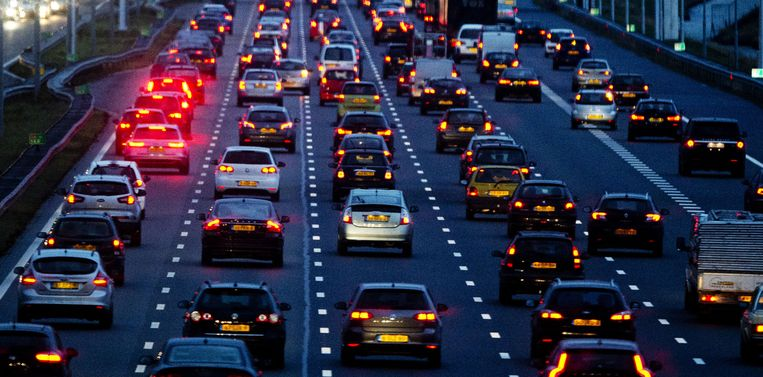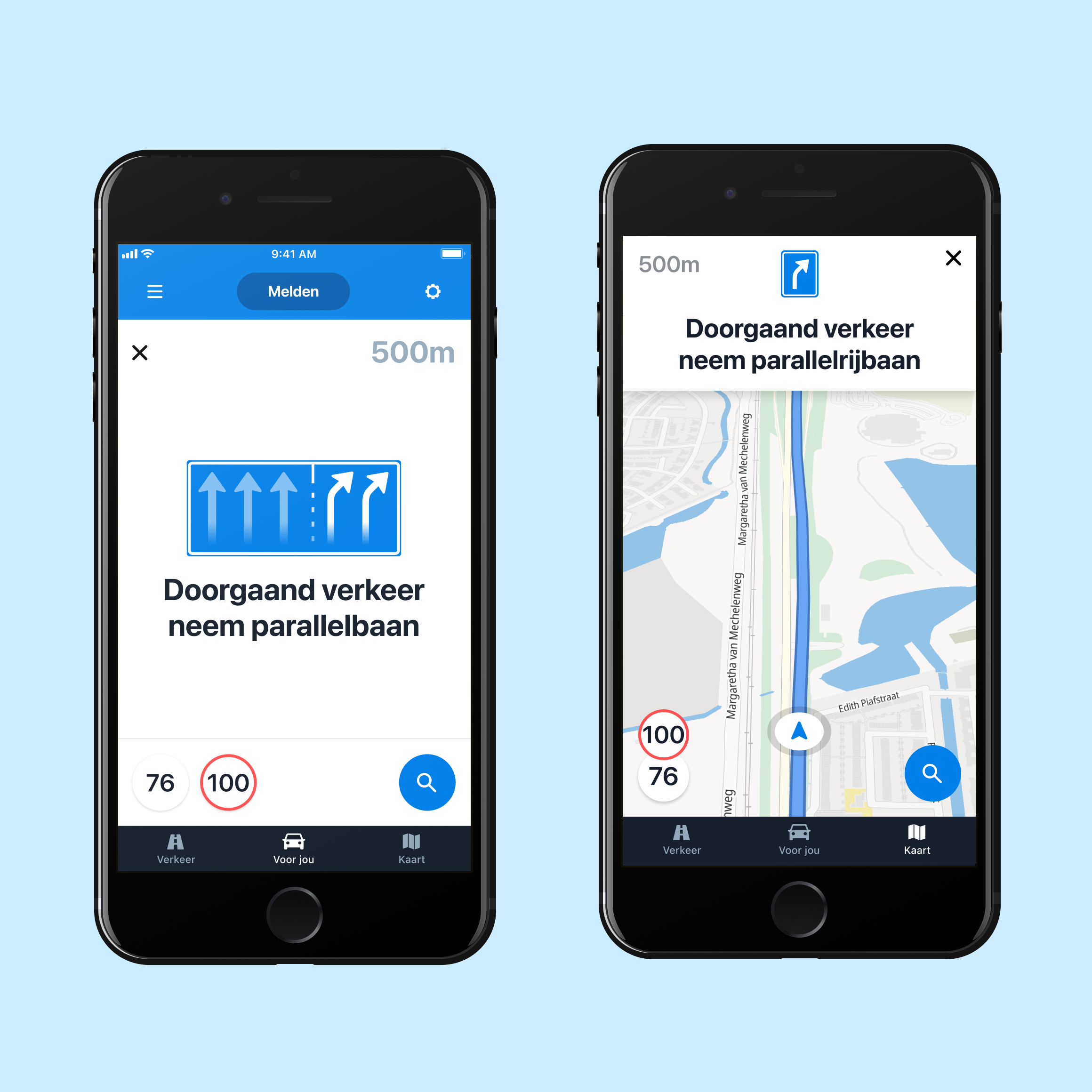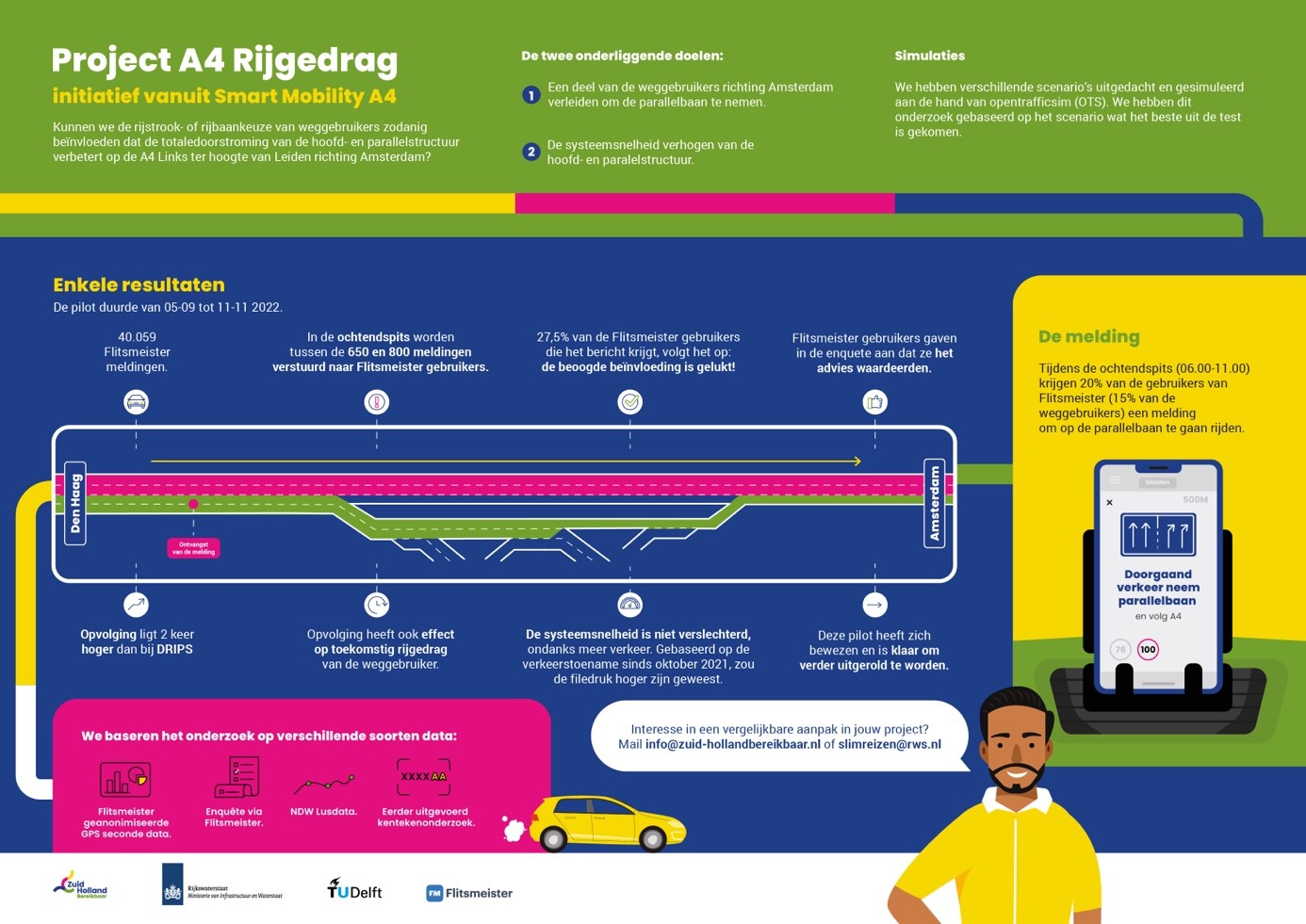Traffic flow on A4 Leiden improved by driving advice
Will traffic flow improve when motorists are assisted in their choice of main or parallel lanes? The answer is yes. Rijkswaterstaat, TU Delft and Zuid-Holland Bereikbaar conducted a pilot project in collaboration with Flitsmeister in the past months. During the morning rush hour, some of the Flitsmeister users driving towards Amsterdam were advised to take the parallel lane. This resulted in a better distribution of traffic between the main and parallel lanes. Despite the increasing traffic, traffic flow on this section of the A4 remained the same, which is partially due to this pilot. in a survey after the trip, users of the app also indicated that the notification was perceived as positive.
The pilot explained
In the morning rush hour there is often a traffic jam on the A4 near Leiden from The Hague to Amsterdam. If more road users from The Hague to Amsterdam use the parallel lane, this could reduce or even prevent traffic jams. TU Delft calculations indicate that it would be most ideal for traffic flow if an additional 2% of through traffic took the parallel lane. The notifications in the image to the right were shown to 20 percent of the Flitsmeister users on this section of the A4. It was determined in advance that the notifications would be sent out in the morning, between 6 a.m. and 11 a.m., because this is where the greatest gains in improving traffic flow were expected to be made.
The pilot was monitored in several ways. For example, it was examined what proportion of motorists followed the advice and what was the ideal size of the group of motorists to give the advice to. Data analysis and surveys were also deployed.
"From Flitsmeister we are very excited about the results of the pilot. It's cool to see that we can use such advice to influence user behavior in such a way that improves traffic flow. Nevertheless, this is of course only a ''small'' pilot and we need to work with the various parties to see how we can most effectively deploy the reach of Flitsmeister on a national scale."
Pilot results
Most notifications were sent during the morning rush hour, between 7:00 and 9:00 a.m. At the busiest times, more than 250 reports were sent per hour. More than 27.5 percent of the Flitsmeister users who received a notification actually followed the instructions and chose the parallel lane. Immediately after reaching their destinations, users said they appreciated the advice. Two quotes from participants: "Great advice, saves a lot of time." And, "I knew this all along and think it's a shame to communicate this to others who don't drive this route daily."
Due to removal of home working measures, at the time of the trial, 20% more traffic was on the road than before. Despite this, the congestion remained almost the same. Victor Knoop of TU Delft is enthusiastic: "We see that a greater proportion of traffic is choosing the parallel lane. This improves traffic flow and there is less congestion for everyone. Without this measure there would have been a lot more traffic jams here!" The results are so good that the advice will continue to be given after the trial. We are looking at a way to deploy this more widely at main and parallel lanes throughout the Netherlands.
Collabaration
In this pilot, Rijkswaterstaat, TU Delft and Zuid-Holland Bereikbaar joined forces with Flitsmeister with the aim of investigating whether influencing the choice of main or parallel lanes affects overall traffic flow. Underlying objectives were to investigate whether motorists would follow the advice at all and, if so, whether any effect on traffic flow was reflected in the data analyses.
More information:
Researcher Victor Knoop is available for questions. To get in touch, please contact Karlijn Spoor, press officer at TU Delft: k.spoor@tudelft.nl or 06-41612272


